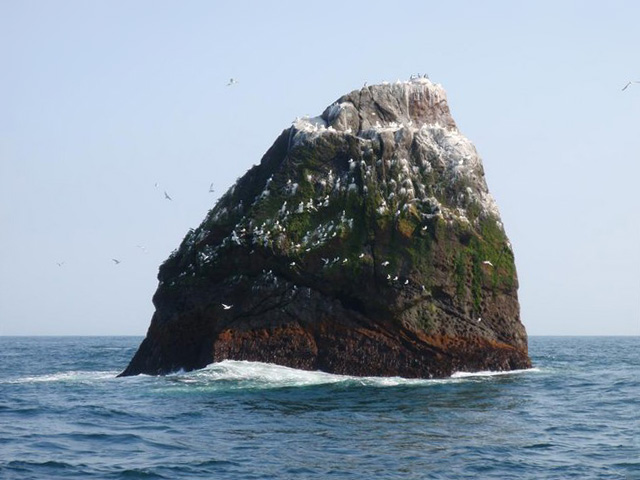|
Sumbiarhólmur
Sumbiarhólmur is an islet in the Faroe Islands The Faroe Islands ( ) (alt. the Faroes) are an archipelago in the North Atlantic Ocean and an autonomous territory of the Danish Realm, Kingdom of Denmark. Located between Iceland, Norway, and the United Kingdom, the islands have a populat ..., located just outside the village of Sumba, which is the southernmost village on the island of Suðuroy. At 7 hectares in area, Sumbiarhólmur is the 6th largest islet of the Faroe Islands. The North Atlantic Ocean is often quite rough near Sumbiarhólmur and around Flesjarnar further south. Boat accidents have happened in the area. (''in Faroese'') People from Sumba graze rams on the islet in summertime. References External links [...More Info...] [...Related Items...] OR: [Wikipedia] [Google] [Baidu] |
Sumba, Faroe Islands
Sumba is the southernmost village of the Faroe Islands, located on the island of Suðuroy. It is located in Sumbiar Municipality. Municipality The municipality has 342 inhabitants (as of March 2023). 254 of these people live in Sumba. The other villages in the Municipality of Sumba are: Lopra (76 inhabitants), Akrar (12 inhabitants), and formerly Víkarbyrgi (0 inhabitants). Sumba is known for several things, including the high bird cliff of Beinisvørð and the local practice of Faroese dance, Faroese chain dancing. They are very good dancers and have a long tradition for singing long songs along with the chain dance. Poul F. Joensen (born 1898 - died 1970) is one of the most famous Faroese poets; he was born in Sumba and grew up there. Later he got married and moved to Froðba. Residents of the village are known as ''Sumbingar''. The name Sumba or Sunnba is from the old name of the village which was Sunnbø/ba or Sunnbøur which means the southernmost village, but over the yea ... [...More Info...] [...Related Items...] OR: [Wikipedia] [Google] [Baidu] |
Faroe Islands
The Faroe Islands ( ) (alt. the Faroes) are an archipelago in the North Atlantic Ocean and an autonomous territory of the Danish Realm, Kingdom of Denmark. Located between Iceland, Norway, and the United Kingdom, the islands have a population of 54,609 and a land area of 1,393 km². The official language is Faroese language, Faroese, which is partially mutually intelligible with Icelandic language, Icelandic. The terrain is rugged, dominated by fjords and cliffs with sparse vegetation and few trees. As a result of its proximity to the Arctic Circle, the islands experience perpetual Twilight, civil twilight during summer nights and very short winter days; nevertheless, they experience a Oceanic climate#Subpolar variety (Cfc, Cwc), subpolar oceanic climate and mild temperatures year-round due to the Gulf Stream. The capital, Tórshavn, receives the fewest recorded hours of sunshine of any city in the world at only 840 per year. Færeyinga saga, Færeyinga Saga and the writin ... [...More Info...] [...Related Items...] OR: [Wikipedia] [Google] [Baidu] |
Suðuroy
Suðuroy (pronounced: �suːwʊrɔior �suːri ‘South Island’, ) is the southernmost of the Faroe Islands. The island covers 163.7 square kilometres (63.2 sq mi). In 2018 the population was 4,601. Suðuroy region ( sýsla) comprises this island and Lítla Dímun, the next isle northward in the Faroes, which is uninhabited. History One ancient settlement, Víkarbyrgi was abandoned late in the 1990s. Another settlement, Akraberg was abandoned around 1350 because of the Black Death; the people who lived there at that time came from Friesland, and legend has it that people in Hørg (in Sumba) can trace their ancestry back to this settlement, which was situated on the southernmost point of the island. In the 17th century, Suðuroy was subjected to repeated attacks by North African pirates, who in the Faroe Islands were referred to as Turks when North Africa belonged to the Ottoman Empire. One well known such incident was the Slave raid of Suðuroy. They abducte ... [...More Info...] [...Related Items...] OR: [Wikipedia] [Google] [Baidu] |
Islets Of The Faroe Islands
An islet ( ) is generally a small island. Definitions vary, and are not precise, but some suggest that an islet is a very small, often unnamed, island with little or no vegetation to support human habitation. It may be made of rock, sand and/or hard coral; may be permanent or tidal (i.e. surfaced reef or seamount); and may exist in the sea, lakes, rivers or any other sizeable bodies of water. Definition As suggested by its origin ''islette'', an Old French diminutive">-4; we might wonder whether there's a point at which it's appropriate to talk of the beginnings of French, that is, when it wa ... diminutive of "isle", use of the term implies small size, but little attention is given to drawing an upper limit on its applicability. The World Landforms website says, "An islet landform is generally considered to be a rock or small island that has little vegetation and cannot sustain human habitation", and further that size may vary from a few square feet to several square m ... [...More Info...] [...Related Items...] OR: [Wikipedia] [Google] [Baidu] |

